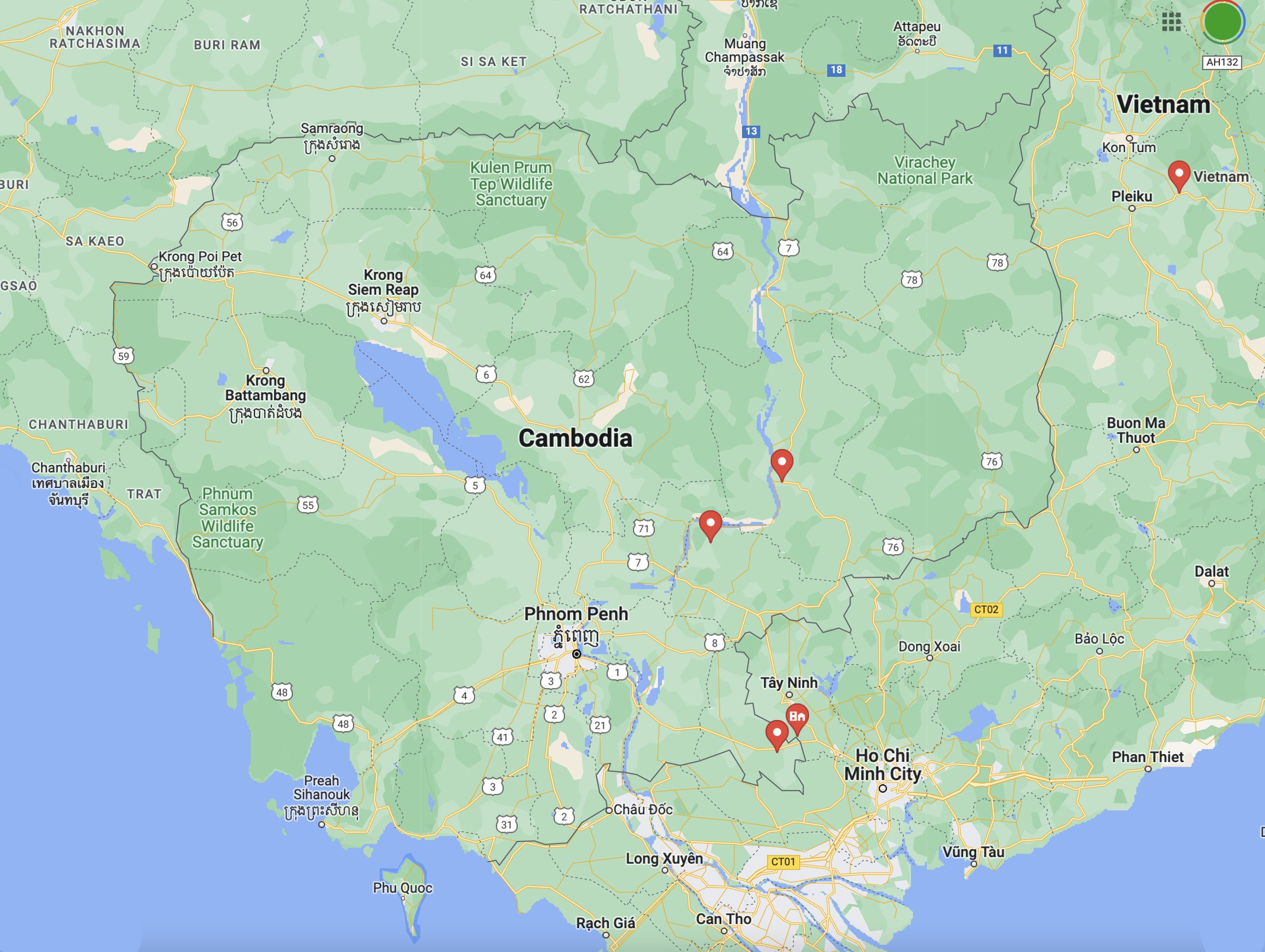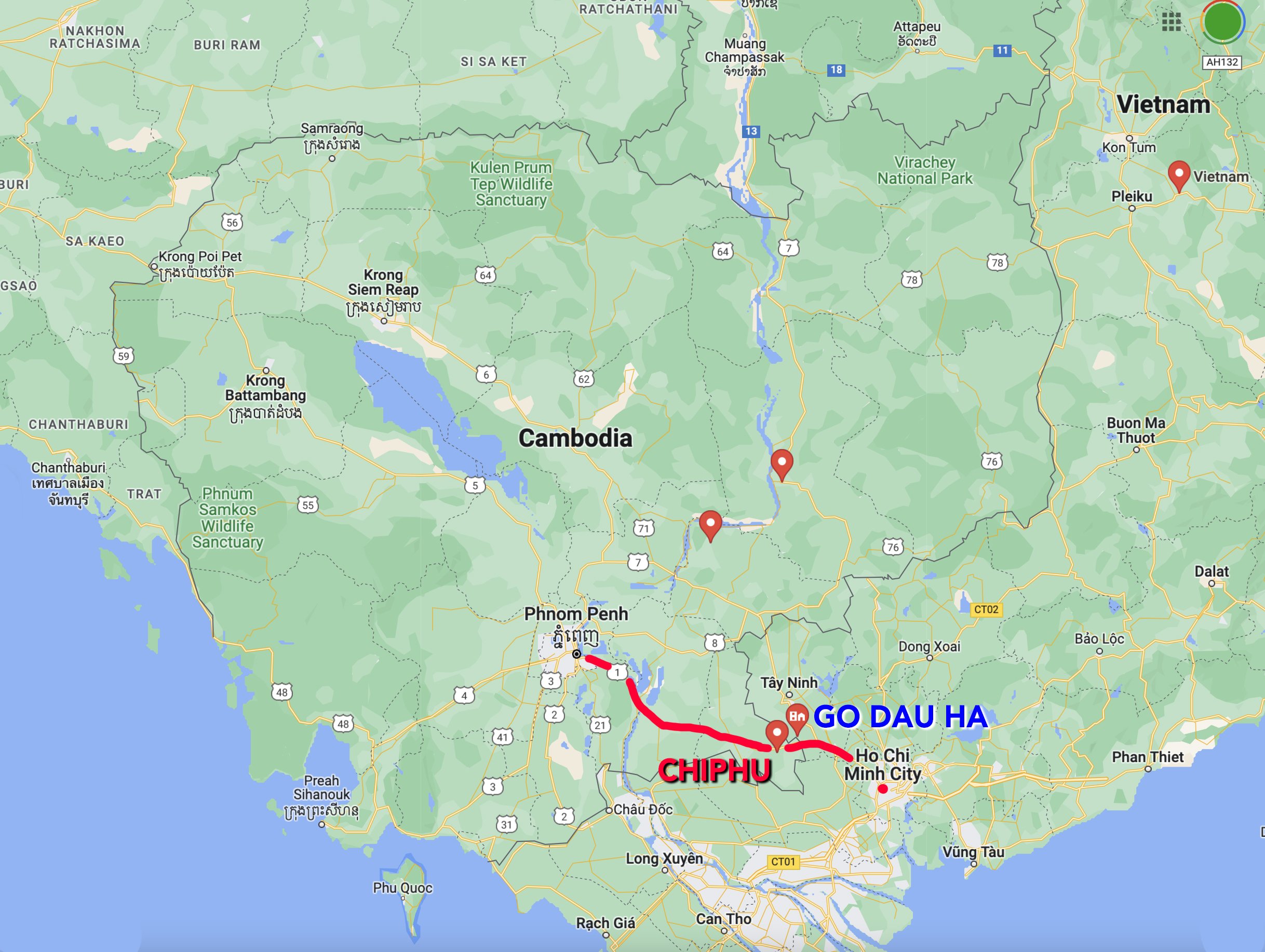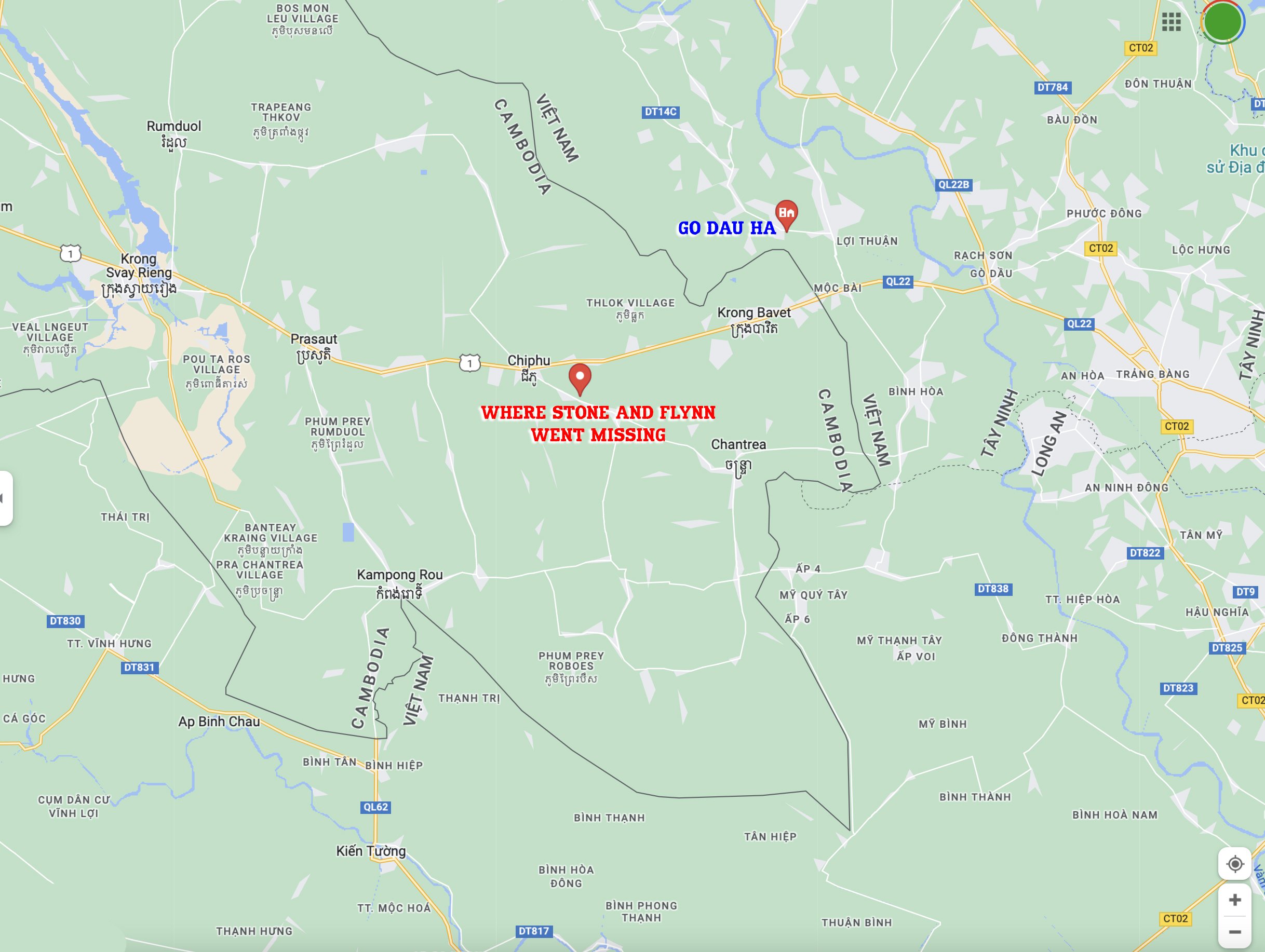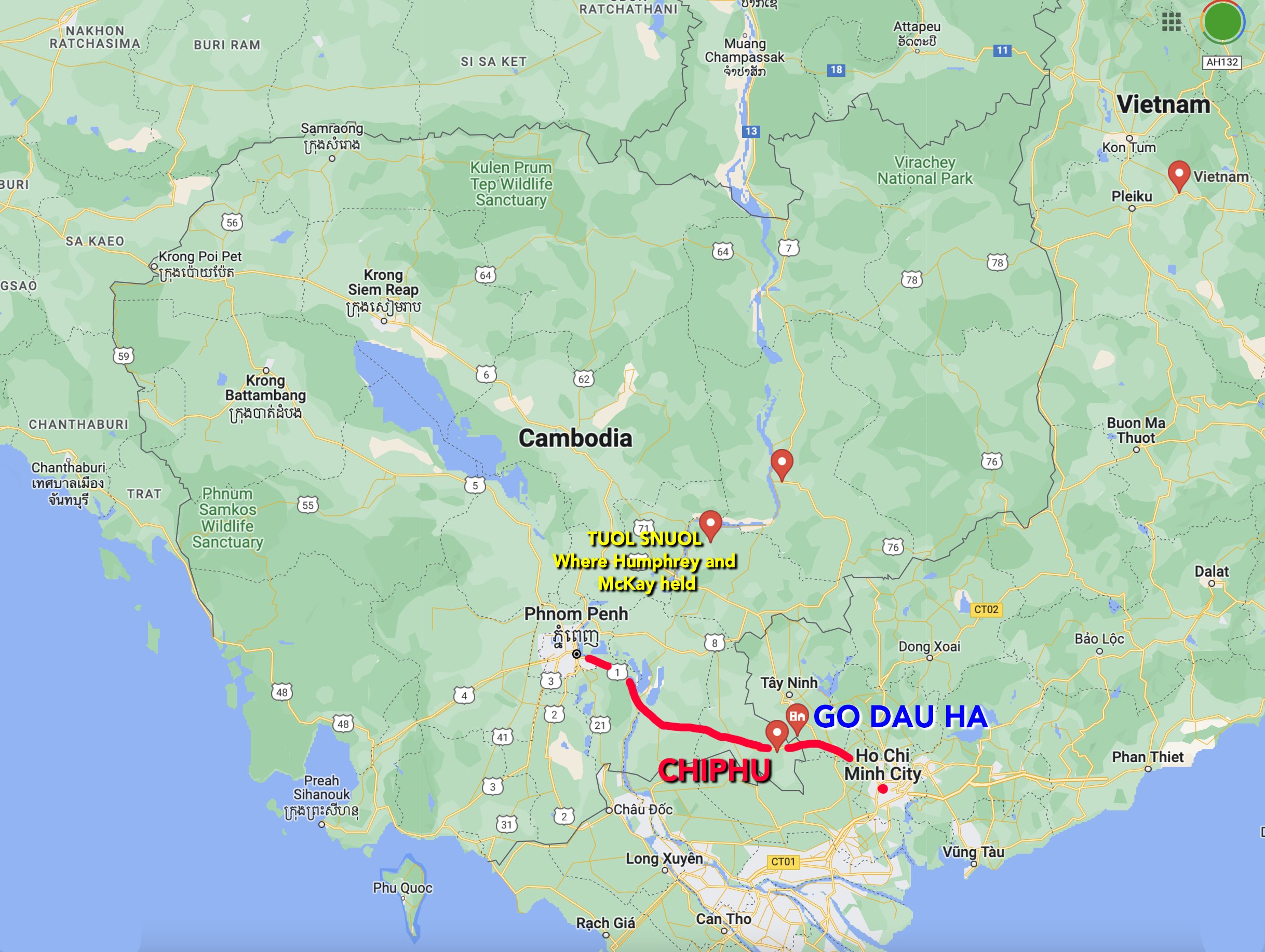Journos - Part II
I can count on one hand the best international journalism movies ever made. There’s “Salvador,” “The Year of Living Dangerously,” the relatively recent, “Balibo,” about East Timor; and of course, “The Killing Fields,” around which this podcast revolves.
Welcome – this is episode 5 of “Who Killed Haing Ngor,” a real-time and crowdsourced podcast in which we explore both lingering questions about the murder and issues connected to the legacy of the Dr. Haing S. Ngor, the actor from the “Killing Fields” who went on to become a political activist and a businessman.
Episode 5 is Part II of “Journos” –a look at what it was like to report in Cambodia in the 1970’s.
I’m diving deeper into the mystery surrounding the disappearance of Sean Flynn and Dana Stone, with its dead-ends and false trails, mutineers and adventurers - that captivates people like the disappearance of Amelia Earhart.
It was April 6, 1970 when photographer Sean Flynn and cameraman Dana Stone went missing near Route One in southeastern Cambodia. That’s 53 years ago.
One reason the mystery’s endured is clearly Flynn’s celebrity. He had dabbled in acting like his famous father, Errol, before finding his calling in Vietnam. But it’s also because there’s an array of alleged sightings, false-leads, and competing theories as to what really happened. There are rabbit holes within rabbit holes.
That’s why it resonates to me like the disappearance of Amelia Earhart, the American aviator who went missing in the South Pacific in 1937, while trying to circumnavigate the globe.
LANE: The Vietnamese commander of the post came to see me and said, “There are two people out here. I would like them to go away. Would you please tell them to go away?” I came outside and they were two Americans in riding motorcycles. They were Dana Stone and Sean Flynn.
That’s Colonel Denny Lane. In April 1970, he was on his second tour in Vietnam for the US Army. A fluent French speaker, he was deployed to Go Dau Ha, Vietnam, along the Cambodian border. His job was to monitor French language communications between Phnom Penh and Saigon.
LANE: They wanted to go to Phnom Penh. They wanted to follow the highway from Go Dau Ha, straight through to Phnom Penh. I said, “We don't have any idea where the Khmer Rouge is between here in Phnom Penh. If I had to do this, I would go to Phnom Penh and come the other way.” They were very nice. They were very civil. They disappeared and went back to Saigon, I guess.
Lane kept careful notes of his work on the border. He was also sympathetic to journalists like Flynn and Stone and what they they were trying to do. They were all roughly the same age.
Oddly enough, Lane says he has no entries in his notebook for his meeting with Flynn and Stone, possibly because he wanted to keep them out of trouble. Based on other notes, he estimates it was around April 14 or 15. That’s a week after their disappearance.
LANE: I've mentioned this to people who are tracking Sean Flynn and Dana Stone. And the dates don't jive. The days that I was on the border don't jive with when they could have possibly been on the Cambodian border. I don't think it's my imagination that I saw them. I'm sorry, one gets old and frazzled. But I think you remember things like that.




And that’s what this mystery is like. Lane was a US Army intelligence officer whose job involved monitoring the border, confident he had met Stone and Flynn. But the dates don’t match.
MPN: Did Tim have a touch of survivor's guilt, because he must have known dozens of people who would have gone missing or gotten killed in those wars.
HARRIS: Yes, he had survivor's guilt about lots of them. But that one in particular because they were gone on the first day.
Here's Marianne Harris, known as Mau, the longtime partner of photographer Tim Page - who made it a life-long mission to find out what happened to Sean Flynn and Dana Stone.
HARRIS: I mean, he returned 62 times to look for them, to look for the journalists, so yeah - Tim returned there in – well, ‘ 89-‘90 for the search, and then just kept going back so he was there for most of ‘90 to ‘93.
But Tim Page wasn’t the only one who was searching.
LINNETT: Through Tim Page, and others I heard about Zalin Grant who also had searched for Flynn and Stone. So I reached out to him. I told him about my interest in and going with him. I heard he was on a quest to search for the two journalists. And I said, “Hey, can I join you?”
That’s Richard Linnett. Along with Roberto Loiederman, he co-authored the book, “The Eagle Mutiny.” He’s going to tell us about his trip with Zalin Grant to central Cambodia, on the hunt for Flynn and Stone’s final resting place. I’ll put links to Linnett’s work on the webpage.
Grant was a US Army veteran and a journalist in Southeast in the 1970’s. And he was at least a friendly acquaintance of Sean Flynn.
We’ll come back to Zalin Grant. Let’s back up for a second to the mutiny on the Columbia Eagle – and how it’s tied to Flynn and Stone. It’s time for a rabbit hole.
The Columbia Eagle was a US Merchant Marine vessel, deployed to deliver weapons, including napalm, to US forces in Vietnam. At the time, civilians could sign up to do a stint on a Merchant Marine vessel since there was a shortage of personnel.
In 1970, two anti-war protesters – Alvin Glatkowski and Clyde McKay – decided to make a point.
LINNETT: They were in the protest movement, off and on, on the fringes of it, and they… felt the protests weren't doing anything and they thought they had to do actually do something significant, and that was stop the bombs. And not only stop the bombs on this ship, they thought their mutiny would - It actually was a hijacking -- their hijacking of the Eagle would lead to other hijackings by other Merchant Mariners or seamen, in an effort to stop the transport of bombs and napalm to Vietnam.
The Columbia Eagle set sail from Long Beach, California, eventually docking in Thailand.
From Thailand it set sail for Vietnam – and Glatkowski and McKay successfully hijacked the Columbia Eagle, setting most of the crew adrift in lifeboats.
They then took the Columbia Eagle into Cambodian waters. Cambodia was then officially a “neutral” country. It was March 1970. Cambodia’s Prince Sihanouk gleefully welcomed the mutineers, applauding their anti-war protest.
Soon, they’d have an epic stroke of bad luck.
LINNETT: Cambodian boats came out, intercepted them took the two crewmen back to the mainland all the way up to up to Phnom Penh. They were wined and dined and treated very well. They never got to see Sihanouk because the next day Lon Nol instigated a coup that was supported by the US and the two mutineers were then thrown into jail in Phnom Penh.
That’s right - Glatkowski and McKay’s hero’s welcome was cut short by the March 18th 1970 coup d’état. That saw the overthrew of Prince Sihanouk and the installation of General Lon Nol – and an entire government more friendly to Washington.
Glatkowski and McKay soon fell out, as friends. Glatkowski was eventually released from jail, and then turned himself in at the US embassy, and was shipped back to the States where he spent 8 years in a federal prison. His part of the story is done.
But in jail, Clyde McKay met a US Army deserter, named Larry Humphrey.
Eventually, Humphrey and McKay were moved to house arrest. Phnom Penh in those days was a pretty small town, especially in ex-pat circles. In house-arrest, McKay and Humphrey had a visitor. Louise Stone. She was the wife of Dana Stone, of course, one of our missing journalists.
LINNETT: Louise Stone met with them. And Clyde McKay said, “Hey, we're gonna escape. We're gonna get out of here and we want to go join these forces of liberation that are in the countryside.” And Louise Stone said, “Well, if you do that, please look for my husband. I hear he's out there somewhere.”
Now, here’s the clue that complicated Tim Page’s efforts to locate Flynn and Stone.
LINNETT: And I think it was Louise Stone, who said to them, “Tell these guerillas that you’re journalists. They don't kill the guerillas don't kill journalists. So you'll be fine. Just go in there and tell them you're a journalist, and you'll be given safe passage. “And so Clyde apparently agreed to that. And they did escape from the Cambodian authorities and disappeared into the forest. And they too were never heard from again.
Around 1990, Cambodia was beginning to open up after years of war. Peace was in the air.
US service-members listed as “missing in action” in the Vietnam War -- the MIA’s - were still a hot political issue in the US. Now, Cambodia, Vietnam and Laos began to allow US teams from the Department of Defense to search for the remains of MIA’s.
Those teams were from the Joint POW/MIA Accounting Command, JPAC, based out of Hawaii. That group later became Joint Task Force - Full Accounting, or JTF.
In 1990, Tim Page returned to Cambodia to search for Flynn and Stone. He was making a “Danger on the Edge of Town,” a documentary with Grenada Television, a British production company, now owned by ITV. Tim’s investigation led him to Kompong Cham province, in Central Cambodia.
There, local people told Tim that in the 1970’s, the Khmer Rouge forced them to look after two Westerners. Journalists, they said.
Obviously, that would make anyone excited about the prospect of finding out what happened to Flynn and Stone. But remember, Louise Stone told McKay and Humphrey - a mutineer and a deserter – to lie, and to say they were journalists. The Cambodian family would have taken them at their word.
Those two Westerners were eventually murdered by the Khmer Rouge. But the family had grown attached to them. After their deaths, they even built a small altar to them in their home – a common practice in Buddhism. And – they preserved some of their teeth.
MPN: There’s the documentary that Granada did and some Cambodians gave Tim some teeth.
HARRIS: Yes.
MPN: And is that’s the material that Tim sent to Hawaii?
HARRIS: Yes to JPAC, in Hawaii. Yes. So Tim sent them the teeth in 1990 when they didn't have DNA or anything like that. They lost them. Then in 2005, when they had to shake-up, they found them and tested them and they belonged to Clyde MacKay…. So Humphrey and Mackay was sent out by Louise Stone to find Sean and Dana. But they got captured… This family were forced to look after Humphrey and Mackay.
Here's Richard Linnett.
LINNETT: Tim Page was given small amount of material like a tooth and some other pieces of bone. And he turned that over to the military, the US military, which did an analysis of it years later, and found that it was the DNA was associated with McKay, not with Flynn and Stone. So we're pretty we're very confident that those two that were up in Kompong Cham were the mutineer and his buddy.
Tim had been being emotionally attached to the idea that he had resolved Flynn and Stone’s fate. Ultimately he accepted that he had not.
HARRIS: Tim was really happy that he resolved that for Humprhey and McKay’s family.
That’s the end of the Columbia Eagle rabbit hole – overlapping with the search for Flynn and Stone. It spanned from 1970 to 1990 – and the 15 years Tim Page thought he had the answer -- til 2005 - when those DNA tests happened.
So is that the end of the story? Not quite. Remember, it was the 1990’s and JTF is out there searching for the remains of MIA’s all over Cambodia. It’s also when journalist Richard Linnett connects with Zalin Grant.
LINNETT: So I reached out to him. I told him about my interest in and going with him. I heard he was on a quest to search for the two journalists. And I said, “Hey, can I join you?” And he said, Yeah, sure. I'll meet you and I'll let you know when I meet you. Right, so I met him in Phnom Penh. And we got along, we got along. Well, he's got a sense of humor. He's an interesting guy. Adventurous but also very cautious. And he and I got along and he said, “Okay, come on, join me I could use somebody.”
Zalin Grant’s search for Flynn and Stone, as documented by Richard Linnett, will be up in the third and final of the “Journos” episodes, in Who Killed Haing Ngor? And we’ll hear swhy there’s still hope for the investigation started by Tim Page and carried on by Mau Harris.
Thank you for listening. Part III of “Journos” will be posted soon. My name is M.P. Nunan. Remember, this is a crowd-sourced podcast – an experiment in journalism – and that means issuing corrections.
In episode 1 – I misidentified a photograph I posted on the webpage, of Sean Flynn carrying Tim Page’s stretcher, when he was wounded. It was not the last tine Tim Page and Sean Flynn saw each other. That photo’s from 1966, another time that Tim was wounded.
In 1969, Sean Flynn visited Tim in the hospital before he was medevacked out, but Tim couldn’t see him because his eyes were bandaged. Sean gave Tim a tiny Buddha amulet from Laos, which Tim kept for the rest of his life, and even held it when he died.
My thanks to Mau Harris for pointing that out. She may even send me a better photo, which I’ll also share on the webpage.
If you knew Haing Ngor personally and would like to contribute – even just an interesting anecdote - please get in touch. If you know any details about his murder you think are relevant, please get in touch. The best way to reach me is to email whokilledhaingngor@gmail.com